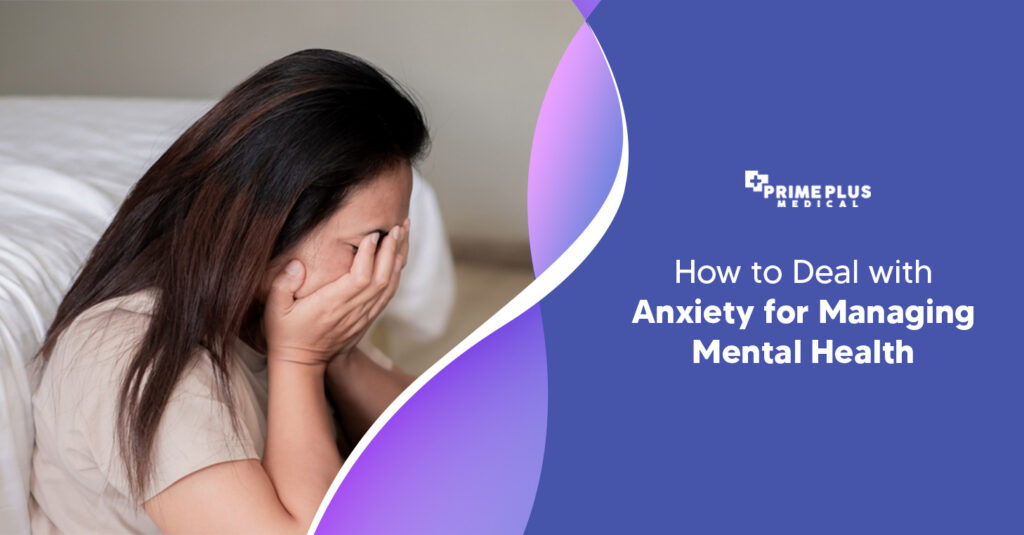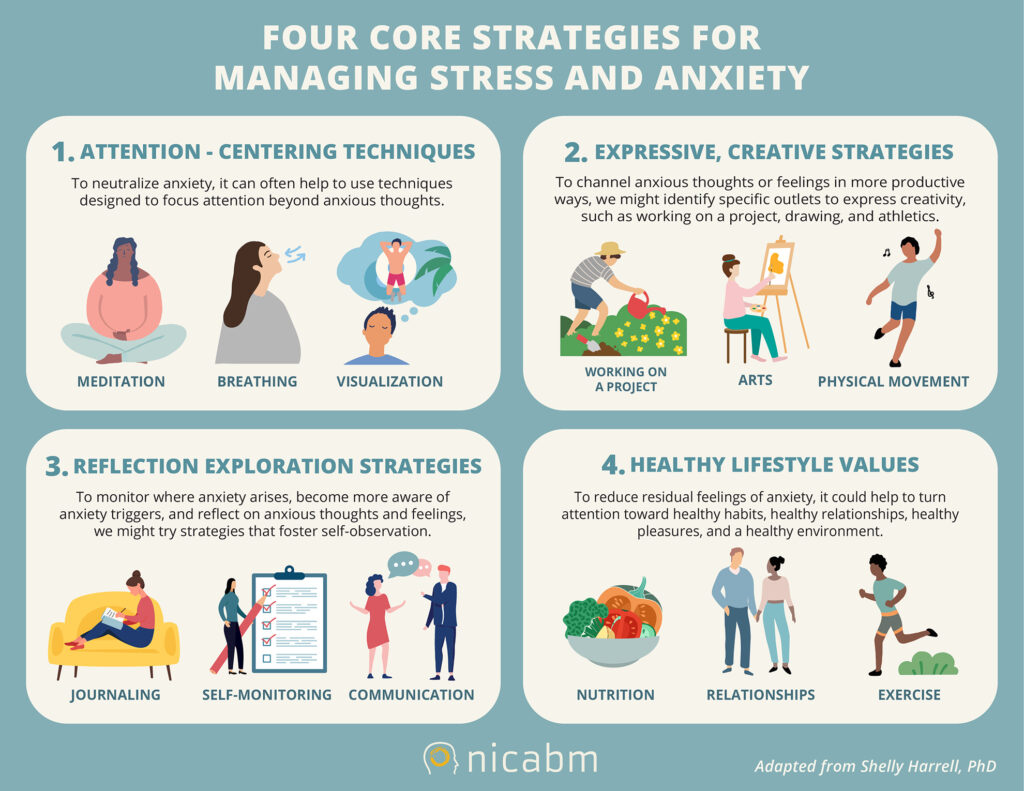Anxiety is a ubiquitous human experience. It’s a natural response to stress, a signal that alerts us to potential threats and motivates us to prepare. However, when anxiety becomes excessive, persistent, and disproportionate to the situation, it can morph into a debilitating condition that interferes with daily life, relationships, and overall well-being. Managing anxiety effectively requires a multifaceted approach, combining self-help techniques, lifestyle adjustments, and, in some cases, professional intervention. This guide explores a range of evidence-based strategies to help individuals understand, manage, and ultimately reduce the impact of anxiety on their lives.
I. Understanding Anxiety: The Foundation for Effective Management
Before delving into management strategies, it’s crucial to understand the nature of anxiety. Anxiety is not a monolithic entity; it encompasses a spectrum of experiences and disorders. Recognizing the specific form of anxiety one is facing is essential for tailoring the most effective interventions.
- Normal Anxiety vs. Anxiety Disorders: Normal anxiety is often temporary and serves an adaptive purpose. Anxiety disorders, on the other hand, are characterized by excessive and persistent worry, fear, and related symptoms that cause significant distress or impairment.
- Types of Anxiety Disorders: Common anxiety disorders include Generalized Anxiety Disorder (GAD), Panic Disorder, Social Anxiety Disorder (SAD), Specific Phobias, Obsessive-Compulsive Disorder (OCD), and Post-Traumatic Stress Disorder (PTSD). Each disorder presents with unique symptoms and triggers.
- The Anxiety Cycle: Understanding the anxiety cycle – the interplay between thoughts, feelings, physical sensations, and behaviors – is paramount. Anxious thoughts trigger uncomfortable physical sensations, leading to avoidant behaviors, which ultimately reinforce the anxiety.
- Identifying Triggers: Pinpointing specific situations, people, or thoughts that trigger anxiety is a crucial step in developing coping mechanisms. Keeping an anxiety journal can be helpful in identifying these patterns.
- Medical Considerations: It’s essential to rule out underlying medical conditions that may mimic or exacerbate anxiety symptoms, such as thyroid problems, heart conditions, or medication side effects.

II. Cognitive Strategies: Re-Shaping Thought Patterns
Anxious thoughts often fuel and maintain anxiety. Cognitive strategies focus on identifying, challenging, and modifying these negative and unhelpful thought patterns.
- Cognitive Restructuring: This technique involves identifying anxious thoughts, evaluating their accuracy, and replacing them with more realistic and balanced ones. For instance, if a person thinks, “I’m going to fail this presentation,” they can challenge this thought by asking, “What evidence supports this thought? What evidence contradicts it? What is the worst that could happen, and how likely is it? What is a more balanced and realistic way of viewing the situation?”
- Thought Stopping: When an anxious thought intrudes, consciously tell yourself to “Stop!” or use a visual cue to interrupt the thought process. This technique helps to regain control over rumination and prevent thoughts from spiraling.
- Positive Self-Talk: Replacing negative thoughts with positive affirmations and self-compassionate statements can improve mood and reduce anxiety. Remind yourself of your strengths, past successes, and coping abilities.
- Decatastrophizing: This technique involves challenging the tendency to magnify potential negative consequences. Instead of assuming the worst, explore alternative outcomes and assess their likelihood. Ask yourself, “What are the odds of this actually happening?” and “Even if it does happen, what resources do I have to cope?”
- Exposure Therapy (Cognitive Component): While primarily behavioral, exposure therapy also involves cognitive reframing. As individuals gradually face their fears, they learn to challenge their negative beliefs about the feared situation or object.
- Mindfulness-Based Cognitive Therapy (MBCT): This approach combines cognitive techniques with mindfulness practices to increase awareness of thoughts and feelings without judgment, allowing individuals to disengage from negative thought patterns.

III. Behavioral Strategies: Modifying Actions and Reactions
Behavioral strategies focus on changing behaviors that contribute to or maintain anxiety.
- Exposure Therapy: This is a highly effective treatment for phobias and other anxiety disorders. It involves gradually exposing oneself to feared situations or objects in a safe and controlled environment. The goal is to learn that the feared stimulus is not as dangerous as perceived and to reduce anxiety through habituation.
- Systematic Desensitization: A type of exposure therapy that combines relaxation techniques with gradual exposure to feared stimuli. Individuals learn to relax deeply and then progressively confront increasingly anxiety-provoking situations while maintaining a relaxed state.
- Relaxation Techniques: Techniques like deep breathing, progressive muscle relaxation, and guided imagery can help to calm the nervous system and reduce physical symptoms of anxiety.
- Social Skills Training: For individuals with social anxiety, social skills training can help to improve communication skills and build confidence in social situations. This may involve role-playing, practicing assertive communication, and receiving feedback.
- Behavioral Activation: This technique involves scheduling activities that are enjoyable or meaningful, even when feeling anxious or unmotivated. Engaging in rewarding activities can improve mood and reduce avoidance behaviors.
- Creating a Routine: Establishing a predictable daily routine can provide a sense of structure and control, which can be particularly helpful for managing anxiety.
- Graded Task Assignment: Breaking down overwhelming tasks into smaller, more manageable steps can reduce anxiety and increase feelings of accomplishment.

IV. Lifestyle Strategies: Cultivating a Supportive Environment
Lifestyle choices can significantly impact anxiety levels. Making healthy lifestyle adjustments can bolster resilience and reduce vulnerability to anxiety.
- Regular Exercise: Physical activity is a powerful tool for managing anxiety. Exercise releases endorphins, which have mood-boosting effects, and can reduce muscle tension and improve sleep. Aim for at least 30 minutes of moderate-intensity exercise most days of the week.
- Healthy Diet: A balanced diet rich in fruits, vegetables, whole grains, and lean protein can support overall well-being and reduce anxiety symptoms. Limit processed foods, sugary drinks, and caffeine, which can exacerbate anxiety.
- Adequate Sleep: Sleep deprivation can worsen anxiety. Aim for 7-9 hours of quality sleep per night. Establish a regular sleep schedule, create a relaxing bedtime routine, and ensure your bedroom is dark, quiet, and cool.
- Stress Management Techniques: Engage in activities that help you relax and de-stress, such as yoga, meditation, spending time in nature, or pursuing hobbies.
- Mindful Eating: Paying attention to the taste, texture, and smell of food can help reduce stress and promote a sense of calm.
- Limiting Screen Time: Excessive screen time, especially before bed, can interfere with sleep and increase anxiety. Set limits on screen time and create a “screen-free zone” in your bedroom.
- Social Support: Connecting with supportive friends and family members can provide emotional support and reduce feelings of isolation.
- Time Management: Poor time management can lead to stress and anxiety. Prioritize tasks, delegate responsibilities, and learn to say no to commitments that overload your schedule.
- Creating a Calm Environment: Surrounding yourself with calming stimuli, such as soothing music, plants, or natural light, can help reduce anxiety.

V. Mindfulness Strategies: Cultivating Present Moment Awareness
Mindfulness involves paying attention to the present moment without judgment. By cultivating mindfulness, individuals can learn to observe their thoughts and feelings without getting caught up in them, reducing the power of anxiety.
- Meditation: Regular meditation practice can help to calm the mind and reduce anxiety. There are many different types of meditation, such as mindfulness meditation, loving-kindness meditation, and walking meditation.
- Body Scan Meditation: This technique involves bringing awareness to different parts of the body, noticing any sensations without judgment. It can help to reduce tension and increase body awareness.
- Mindful Breathing: Paying attention to the breath can help to ground oneself in the present moment and reduce anxiety. Practice deep, slow breaths, focusing on the sensation of the breath entering and leaving the body.
- Mindful Walking: Paying attention to the sensations of walking, such as the feeling of your feet on the ground and the movement of your body, can help to reduce anxiety and promote a sense of calm.
- Mindful Activities: Bringing mindful awareness to everyday activities, such as eating, washing dishes, or brushing your teeth, can help to reduce stress and increase enjoyment.

VI. Seeking Professional Help: When to Reach Out
While self-help strategies can be effective for managing mild to moderate anxiety, professional help is often necessary for individuals with more severe anxiety disorders.
- Therapy: Cognitive Behavioral Therapy (CBT) is a highly effective treatment for anxiety disorders. CBT helps individuals identify and change negative thought patterns and behaviors that contribute to anxiety. Other therapeutic approaches, such as Acceptance and Commitment Therapy (ACT) and Dialectical Behavior Therapy (DBT), can also be helpful.
- Medication: Medication may be prescribed to help manage anxiety symptoms, particularly when combined with therapy. Antidepressants (SSRIs and SNRIs) are commonly used to treat anxiety disorders, as are anti-anxiety medications (benzodiazepines). Medication should always be prescribed and monitored by a qualified medical professional.
- Support Groups: Connecting with others who are experiencing anxiety can provide a sense of community and support.
- Signs You Need Professional Help: Consider seeking professional help if anxiety is significantly interfering with your daily life, relationships, or work; if you are experiencing panic attacks; if you are having thoughts of self-harm; or if self-help strategies are not effective.
VII. Maintaining Progress: Long-Term Strategies
Managing anxiety is an ongoing process, not a one-time fix. Implementing long-term strategies is crucial to prevent relapse and maintain well-being.
- Continue Practicing Coping Skills: Even when anxiety is under control, continue to practice the coping skills you have learned to maintain your progress.
- Regular Self-Care: Prioritize self-care activities to reduce stress and promote overall well-being.
- Maintain Social Connections: Nurture relationships with supportive friends and family members.
- Monitor Your Anxiety Levels: Pay attention to your anxiety levels and be proactive in addressing any warning signs of a relapse.
- Seek Ongoing Support: Consider continuing therapy or attending support groups to maintain accountability and receive ongoing guidance.
- Be Patient and Persistent: Managing anxiety takes time and effort. Be patient with yourself, celebrate small successes, and don’t give up.
Super Fast Anti-Anxiety Relief Point! Dr. Mandell
Conclusion
Anxiety is a complex and multifaceted experience, but it is also manageable. By understanding the nature of anxiety, implementing effective cognitive, behavioral, and lifestyle strategies, practicing mindfulness, and seeking professional help when needed, individuals can significantly reduce the impact of anxiety on their lives. The key is to adopt a holistic approach that addresses the root causes of anxiety and promotes overall well-being. Remember that managing anxiety is a journey, not a destination, and consistent effort and self-compassion are essential for long-term success.